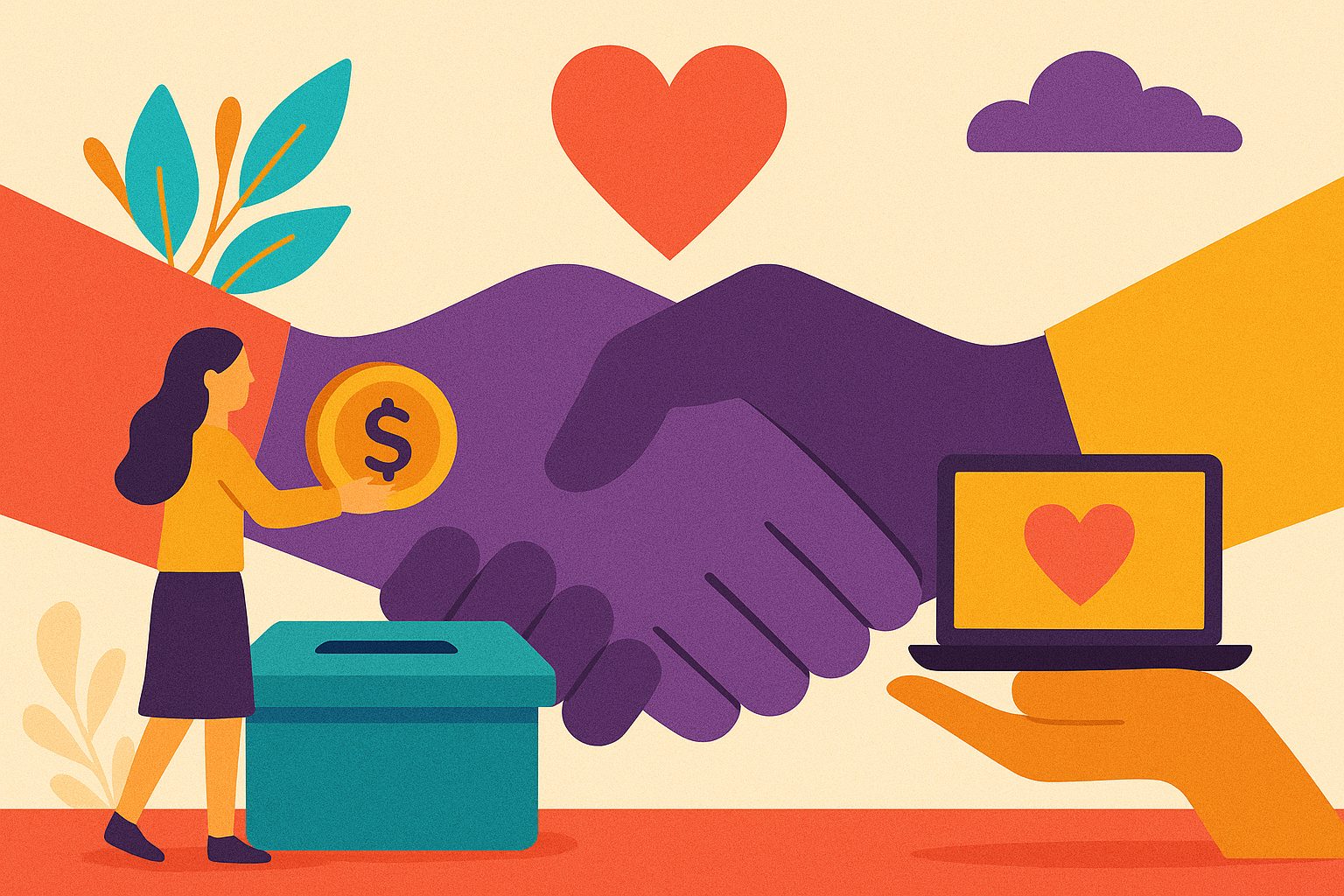Charting the Path: Why Mental Health Crowdfunding Matters
The world is in the midst of a mental health reckoning. With increasing awareness comes increasing demand—for therapy, wellness programs, digital tools, and community support services. Yet mental health care remains underfunded and, in many cases, inaccessible to those who need it most. Insurance gaps, high treatment costs, and social stigma continue to stand in the way. In this environment, crowdfunding emerges not just as a financial tool, but as a lifeline. Launching a successful mental health crowdfunding campaign means more than raising money—it means building a movement around healing, empathy, and collective support. Whether you’re an individual in need, a mental health practitioner, or an innovator developing new wellness solutions, crowdfunding offers the chance to turn awareness into action. But success isn’t automatic. It requires strategy, storytelling, connection, and trust. This guide will walk you through the art and science of creating a powerful campaign that resonates—and raises.
Start with Your Why: Define the Heart of Your Campaign
Every powerful crowdfunding campaign begins with a clear, compelling reason. Why are you launching this campaign? Who will benefit—and how? Whether you’re raising funds for your own therapy, a loved one’s care, or to launch a broader mental health initiative, clarity is everything. Campaigns that succeed don’t just list costs—they tell stories. They share the human experience behind the numbers. They highlight the emotional urgency, the stakes, and the hope. Before you even write your campaign description, spend time thinking deeply about your purpose. What do you want people to feel when they read your story? What outcome are you inviting them to be part of? This emotional clarity becomes your foundation. Every image, word, and update should connect back to your core “why.” In mental health campaigns especially, authenticity is your greatest currency.
Know Your Audience: Who Are You Speaking To?
Successful campaigns are not broadcast to everyone—they’re conversations with the right people. Before you go live, define your audience. If you’re raising money for individual therapy, your audience may be friends, extended family, coworkers, and your broader social media network. If you’re funding a new mental wellness app, your audience may include tech-savvy donors, mental health advocates, and community organizations. Understanding your audience means speaking their language. Use terms and imagery that reflect their values and lived experience. For example, if your campaign targets Gen Z donors, short videos, bold visuals, and transparent updates will resonate. If you’re reaching out to wellness-minded professionals, emphasize scientific evidence and sustainable impact. Tailor every part of your campaign—from headlines to hashtags—to match the tone, habits, and priorities of those most likely to support you.
Craft a Story That Moves People
In the crowded world of online fundraising, storytelling is everything. What sets your campaign apart is not just the need—but the narrative. Stories have the power to inspire, humanize, and mobilize action in a way numbers never can. Start by introducing who you are and what you’re facing. Be vulnerable, but grounded. Share how mental health challenges have affected your life or the lives of others in your community. Explain what specific help you’re seeking—whether it’s ten therapy sessions, a digital development sprint, or a peer-support initiative. Show people the transformation they’ll be helping to fund. Visuals are key. Photos, short videos, or simple graphics can enhance the emotional tone of your story. Make sure every piece of content reinforces the idea that this campaign isn’t about charity—it’s about partnership, empowerment, and meaningful change.
Pick the Right Platform for Your Mission
There are countless crowdfunding platforms available, but not all are ideal for mental health campaigns. Choose a platform that aligns with your goals, supports your storytelling format, and feels trustworthy to your audience. GoFundMe is often the go-to for personal medical campaigns and has strong brand recognition. If you’re launching a nonprofit program or startup product, consider platforms like Indiegogo, Givebutter, or even mental-health-specific platforms like FundRazr. Some platforms also allow for recurring donations, which can help you sustain long-term efforts. Look into each platform’s fees, payout timing, mobile friendliness, and tools for updates and donor engagement. Your platform should feel like a partner in your mission, not just a tool.
Set Realistic Goals—and Break Them Down Clearly
Setting your fundraising goal is a strategic decision. It’s not just about how much you want—it’s about what your audience believes they can help you achieve. If your goal is too low, you may underserve your mission. Too high, and you risk discouraging donors from contributing at all. Start with the minimum you need to succeed. Break it down in your campaign description so donors understand exactly where the funds will go. For instance, if you’re raising $4,000, explain that $2,000 covers therapy sessions, $1,000 is for medication, and $1,000 helps with transport and supportive care. This transparency builds trust. Donors like to know their money has a direct and tangible impact. You can always stretch the goal later if the campaign gains traction—but your first milestone should feel achievable.
Launch with Energy: Timing and Momentum Matter
The first 72 hours of a crowdfunding campaign are critical. This is when algorithms pay attention, donors feel most excited, and your campaign gains initial credibility. Before launching, line up your earliest supporters—friends, family, mentors, or coworkers who can give immediately and share enthusiastically. The early surge sends a signal that your campaign is worth supporting. Announce your campaign across all relevant channels: email, social media, community forums, and even direct messages. Share your personal story in your own voice. People respond to authenticity and urgency. Plan a content calendar for the first two weeks. Post updates, progress bars, video thank-yous, or personal reflections. Show momentum. Show gratitude. And most importantly, show that people’s contributions are making a difference.
Engage Your Network Without Burning Out
Crowdfunding is not passive. You can’t just post once and hope donations roll in. But neither should you exhaust yourself trying to micromanage every share. The key is consistent, human outreach. Check in regularly with your supporters. Update them with progress, milestones, or even emotional wins—like how a therapy session helped you sleep better, or how a new feature is being prototyped. These small updates keep people invested in your journey. Use social proof. When others donate, publicly thank them (with permission). When someone shares your campaign, highlight it. When someone messages you privately, respond with warmth. Consider scheduling your outreach in batches—five messages in the morning, five in the evening. Balance your digital efforts with self-care, especially when your campaign relates to sensitive or emotionally draining topics.
Make Donors Feel Like Partners
Donors aren’t just financial contributors—they’re part of your healing story. Whether they gave $5 or $500, they deserve to feel included and appreciated. Personalized thank-yous go a long way. If you have time, record short videos or voice notes. Share the deeper impact of their gift—not just what you were able to pay for, but how it helped you emotionally, physically, or creatively. Offer updates after the campaign closes. Even a short note explaining what you learned, how the funds were used, and what comes next can leave a lasting impression. Some campaigners choose to create digital journals, newsletters, or follow-up pages that keep donors connected. This transforms a one-time fundraiser into a long-term relationship—an invaluable resource for future projects or needs.
Telling the Story After the Campaign Ends
The end of a campaign isn’t the end of the journey. In fact, it’s just the start of your credibility as a changemaker. Follow-through is everything. Share results. Let people know how their help made a real difference. If you reached your funding goal, explain how you used every dollar. If you fell short, talk about what you’re doing next. Many campaigners use the momentum of one campaign to launch another—especially if they’ve built trust with their donors. Others use the platform to create a blog, a podcast, or a digital space to discuss mental health openly. Closing a campaign with transparency and gratitude invites donors to be part of your ongoing mission—and it establishes you as someone worth backing again.
Building a Legacy Through Crowdfunding
A single crowdfunding campaign, when done well, can spark lasting change. Not just in your life, but in your community. In mental health especially, where stigma still runs deep, your story matters. Your courage to ask for help gives others permission to do the same. Your success paves the way for future projects, products, and programs that support emotional wellness in new and powerful ways. Crowdfunding isn’t just about raising money—it’s about creating connections, mobilizing hope, and shifting the culture around mental health care. When you launch with intention, lead with heart, and follow through with transparency, your campaign becomes more than a fundraiser—it becomes a symbol of resilience and possibility.




